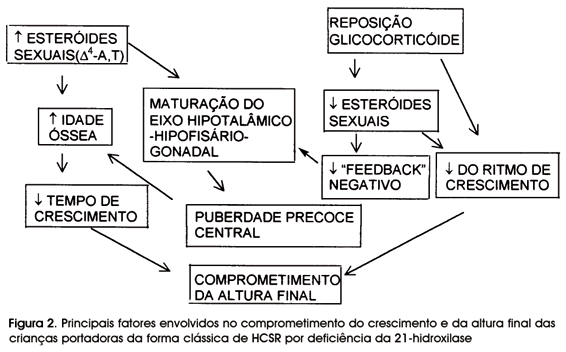Congenital adrenal hyperplasia (CAH) represents a group of genetic diseases where the synthesis of cortisol is compromised by deficiency in one of the enzymes involved in adrenal steroidogenesis. In CAH owing to 21-hydroxylase deficiency (21OHD), responsible for more than 90% of all cases, the adrenal androgen secretion is increased. The classic form of 21OHD is treated with glucocorticoids, and mineralocorticoid is replaced if necessary. The chronic use of corticosteroids may compromise growth by different means. Otherwise, the excessive adrenocortical secretion of sex steroids reduces the duration of growth, by both accelerating bone age and the possible induction of central precocious puberty. The associated effects of prolonged glucocorticoid therapy and excessive amounts of sex steroids upon growth render children with CAH specially at risk for short stature. Therefore their growth and pubertal evolution must be carefully evaluated and monitored. It is also important to use glucocorticoids with less growth suppressive potential. Thus, we believe that the best therapeutic option for children with CAH is the use of hydrocortisone ou cortisone acetate in physiologic doses, the larger dose given in the morning.
Congenital adrenal hyperplasia; 21-Hydroxylase deficiency; Growth; Treatment; Corticosteroids; Adrenal androgens




